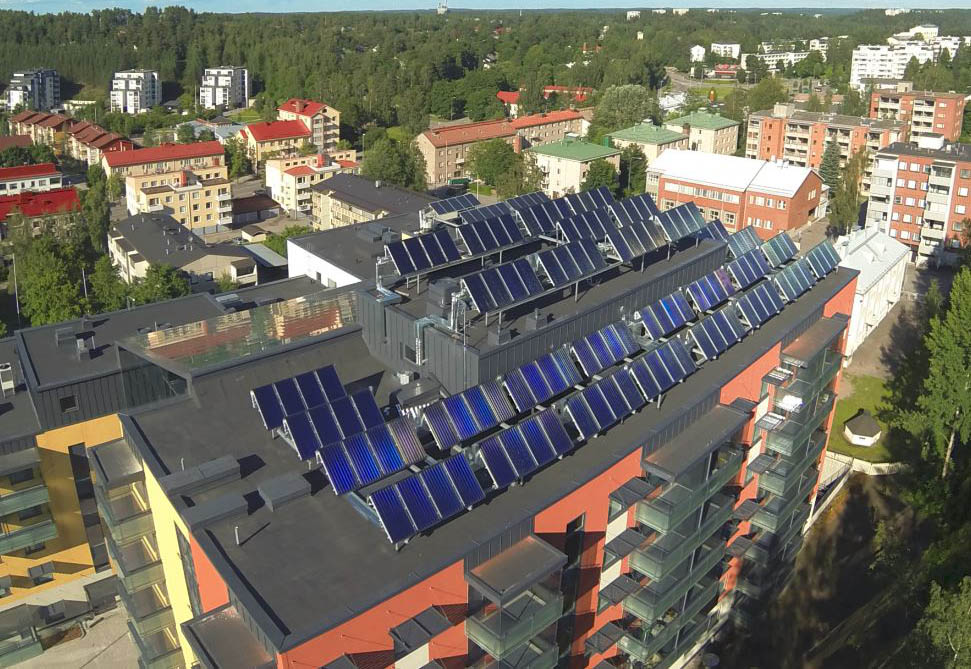
Onnelanpolku nursing home, which was built in 2013, is a so-called near zero energy building. To achieve this classification, the building needs to be well insulated and some of the consumed energy needs to be produced locally. A hybrid heating system for DHW and space heating was realized with the combination of solar thermal collectors and district heating.
Savosolar delivered 240 m² of collector area, which is used to cover 20–30% of the total thermal energy need of the building.
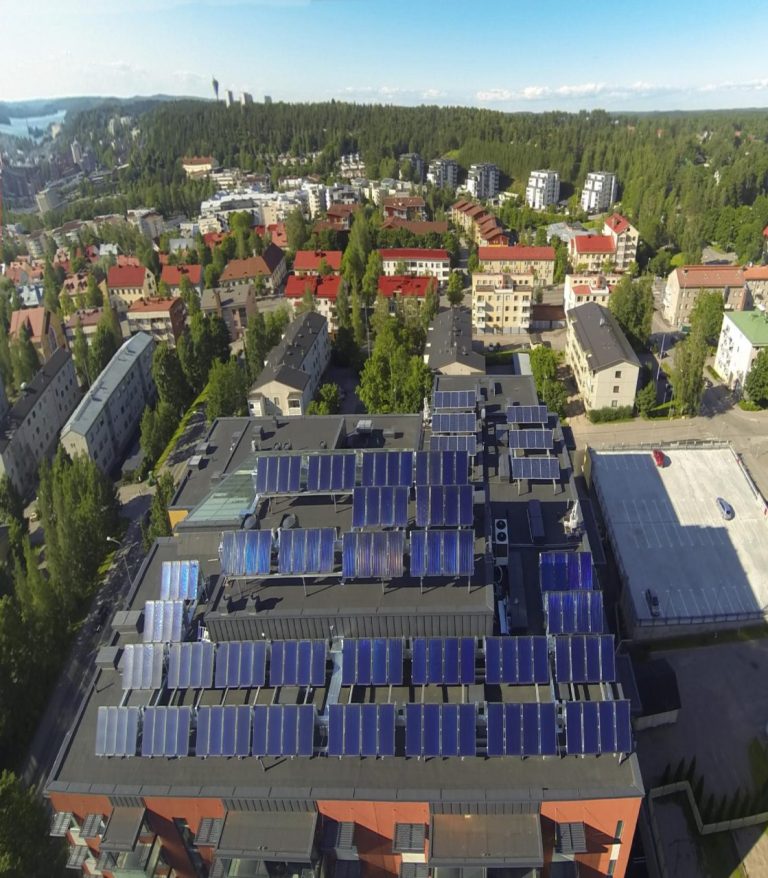
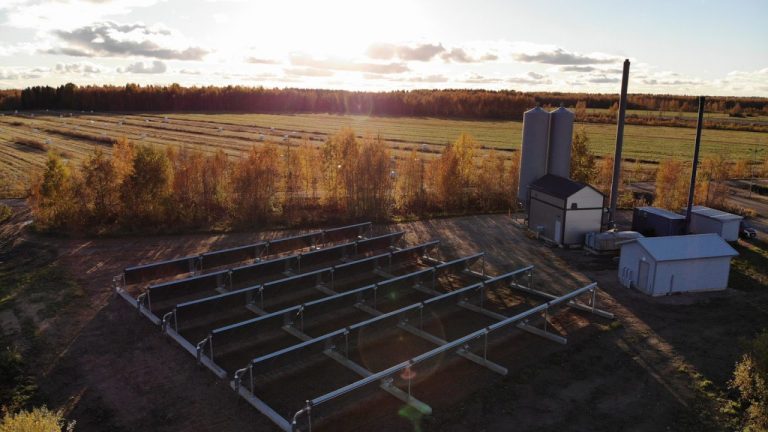
Savosolar delivered -once again- the largest solar thermal installation in Finland. This system is located way North in Tupos, Liminka – less than 200 km from the Arctic Circle.
The heating load of Tupos district heating is usually covered by wood pellets. Yet during summer time, the load is often so low, that the substantial wood pellet burner cannot be properly used and an oil burner got used, instead. The special challenge here has been to design a very efficient solar thermal system that could replace the oil consumption in summer to run the district heating network almost completely fossil-free.
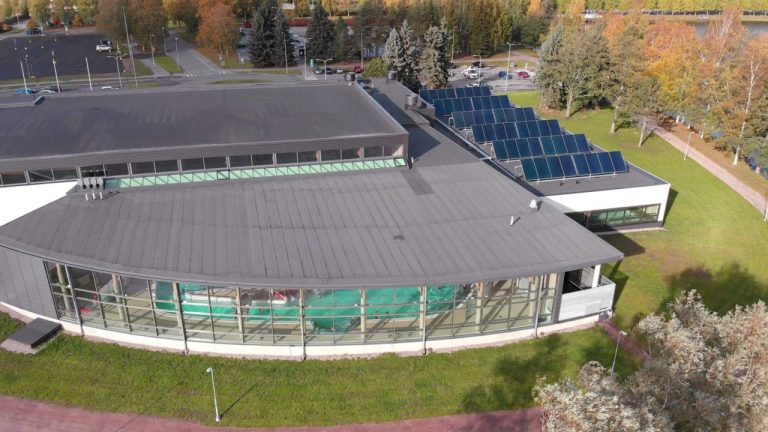
Swimming halls are very well suited for solar thermal production. Typically, their heat consumption is big and the required temperature level tends to be relatively low. In such cases solar thermal collectors are operating with a very high efficiency.
However, quite often swimming halls are closed some time of the year and summertime closure may mean extra challenges for solar heat supply.
For Hämeenlinna swimming hall Savosolar solved this issue by feeding surplus solar energy in summer to the nearby district heating network. Thus, the solar system is producing heat all days and depending on the swimming hall’s actual heat demand, the facility is either a district heating provider or a consumer.
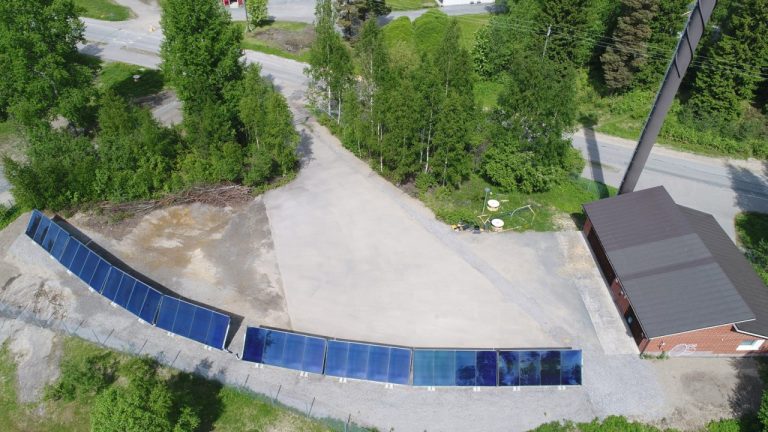
Mikkeli city, the home of Savosolar received the “Inspiring Solution Award” in 2018 Celsius City Summit for the Ristiina Village project. It is a green district heating energy concept with a clever combination of solar thermal and wood chips.
Savosolar was involved in this award winning project by delivering turn-key solar district heating installation to the Ristiina district heating plant.